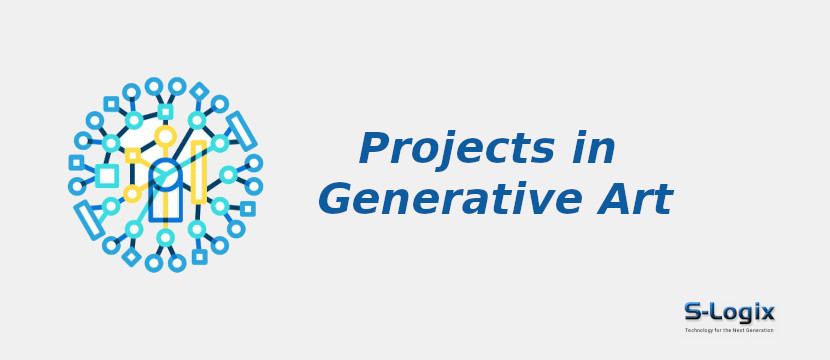Project Background:
Generative Art represents a fascinating intersection between technology and artistic expression, where algorithms and computational processes play a pivotal role in creating visual or auditory compositions. The background in generative art involves leveraging programming languages and algorithms to generate unique and unpredictable artworks autonomously. Artists and programmers collaborate to design algorithms that define rules and parameters guiding the generative system to produce diverse and complex visual outcomes. This innovative approach challenges traditional notions of authorship, as the artist becomes a co-creator with the algorithm, influencing the process rather than dictating specific details. This foundation lies in exploring randomness, algorithms, and the synergy between human creativity and machine intelligence, fostering a dynamic and ever-evolving artistic practice that reflects the fusion of art and technology.
Problem Statement
- The field of generative art faces several challenges that warrant attention and exploration. One prominent issue revolves around balancing control and unpredictability in the generative process.
-
Artists and programmers often grapple with finding the right equilibrium, as too much control can result in predictable outcomes, while excessive unpredictability may yield unsatisfactory or chaotic results.
-
Additionally, there is a need to address the accessibility of generative art tools and platforms, which require a certain level of technical proficiency, limiting the broader participation of artists without programming expertise.
-
Furthermore, questions about the ethical implications of generative art algorithms and the potential biases they may introduce raise concerns within the artistic community.
Aim and Objectives
- Generative art aims to explore the intersection of technology and creativity, leveraging algorithms to generate unique and unpredictable artistic compositions autonomously.
-
Develop generative algorithms that push the boundaries of traditional artistic creation, fostering new forms of visual and auditory expression.
-
To create compelling and diverse generative artworks, strive to find the optimal balance between artist input and algorithmic spontaneity.
- Make generative art tools and platforms more accessible to a wider audience, reducing barriers for artists without extensive programming knowledge.
-
Examine and mitigate potential biases and ethical implications associated with generative art algorithms, ensuring responsible and inclusive artistic practices.
-
Facilitate collaboration and knowledge-sharing within the generative art community to foster a supportive environment for artists and enthusiasts.
Contributions to Generative Art
1. Generative art has demonstrated the potential for algorithms to exhibit creativity, challenging traditional notions of authorship and expanding the understanding of what it means to create art.
2.
By embracing randomness, generative art has introduced new and surprising aesthetics, fostering a departure from conventional artistic styles and encouraging exploration of the unexpected.
3.
The field has facilitated collaboration between artists and programmers, fostering a unique intersection of art and technology. This interdisciplinary approach has led to the development of diverse generative art projects.
4.
It has also embraced the digital medium, allowing artists to create interactive and dynamic works that respond to various inputs or environmental factors, which expanded the possibilities for artistic expression beyond static forms.
5.
Generative art has influenced the evolution of artistic practice by challenging artists to rethink their role in the creative process, encouraging a symbiotic relationship between artist and algorithm, and evolving approach to art-making.
Deep Learning Algorithms for Generative Art
- Generative Adversarial Networks (GANs)
-
Variational Autoencoders (VAEs)
-
Recurrent Neural Networks (RNNs)
-
Long Short-Term Memory networks (LSTMs)
-
Transformer Networks
-
Deep Belief Networks (DBNs)
-
StyleGAN
-
Conditional Variational Autoencoders (CVAEs)
-
Deep Dream
-
Bidirectional Generative Adversarial Networks (BiGANs)
-
Progressive Growing of GANs (PGGANs)
-
Deep Convolutional Generative Adversarial Networks (DCGANs)
-
WaveGAN
-
MUNIT (Multimodal UNsupervised Image-to-image Translation)
Datasets for Generative Art
- CelebA
-
ImageNet
-
MNIST
-
ADE20K (ADE20K Scene Parsing)
-
Fashion-MNIST
-
LFW (Labeled Faces in the Wild)
-
WikiArt
-
Artbreeder
-
Sketchy Database
-
DTD (Describable Textures Dataset)
-
FFHQ (Flickr-Faces-HQ)
-
Abstract Art Dataset
-
COCO (Common Objects in Context)
-
Metropolitan Museum of Art Open Access Dataset
Performance Metrics
- Inception Score (IS)
-
Frechet Inception Distance (FID)
-
Precision and Recall
-
Peak Signal-to-Noise Ratio (PSNR)
-
Mean Squared Error (MSE)
-
Mean Absolute Error (MAE)
-
Kullback-Leibler Divergence (KL Divergence)
-
Density Estimation
-
Coverage
-
Diversity
-
Nearest Neighbor Distance
-
Visual Turing Test Score
Software Tools and Technologies
Operating System: Ubuntu 18.04 LTS 64bit / Windows 10
Development Tools: Anaconda3, Spyder 5.0, Jupyter Notebook
Language Version: Python 3.9
Python Libraries:
1.Python ML Libraries:
- Scikit-Learn
- Numpy
- Pandas
- Matplotlib
- Seaborn
- Docker
- MLflow
2.Deep Learning Frameworks:
- Keras
- TensorFlow
- PyTorch
